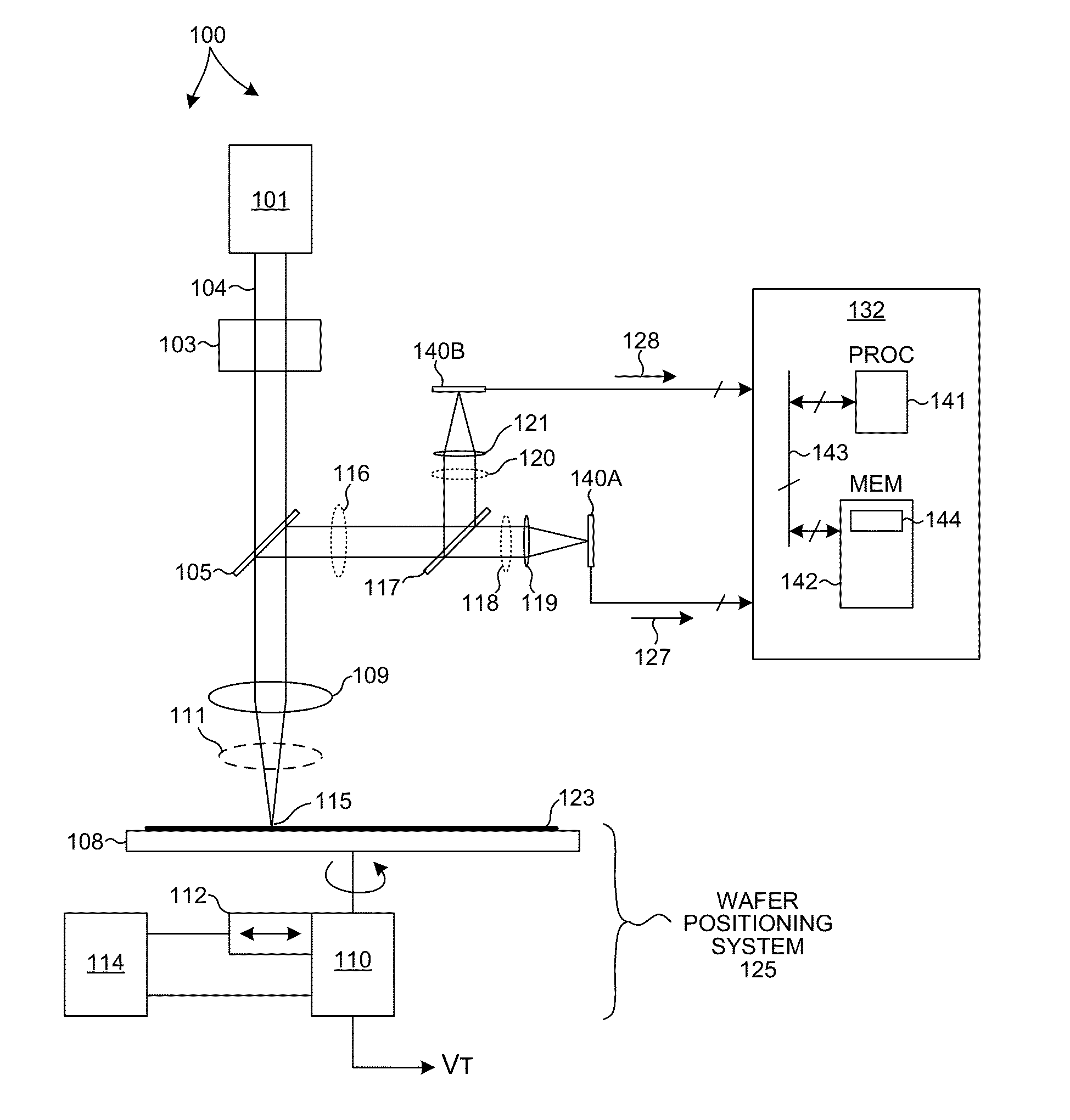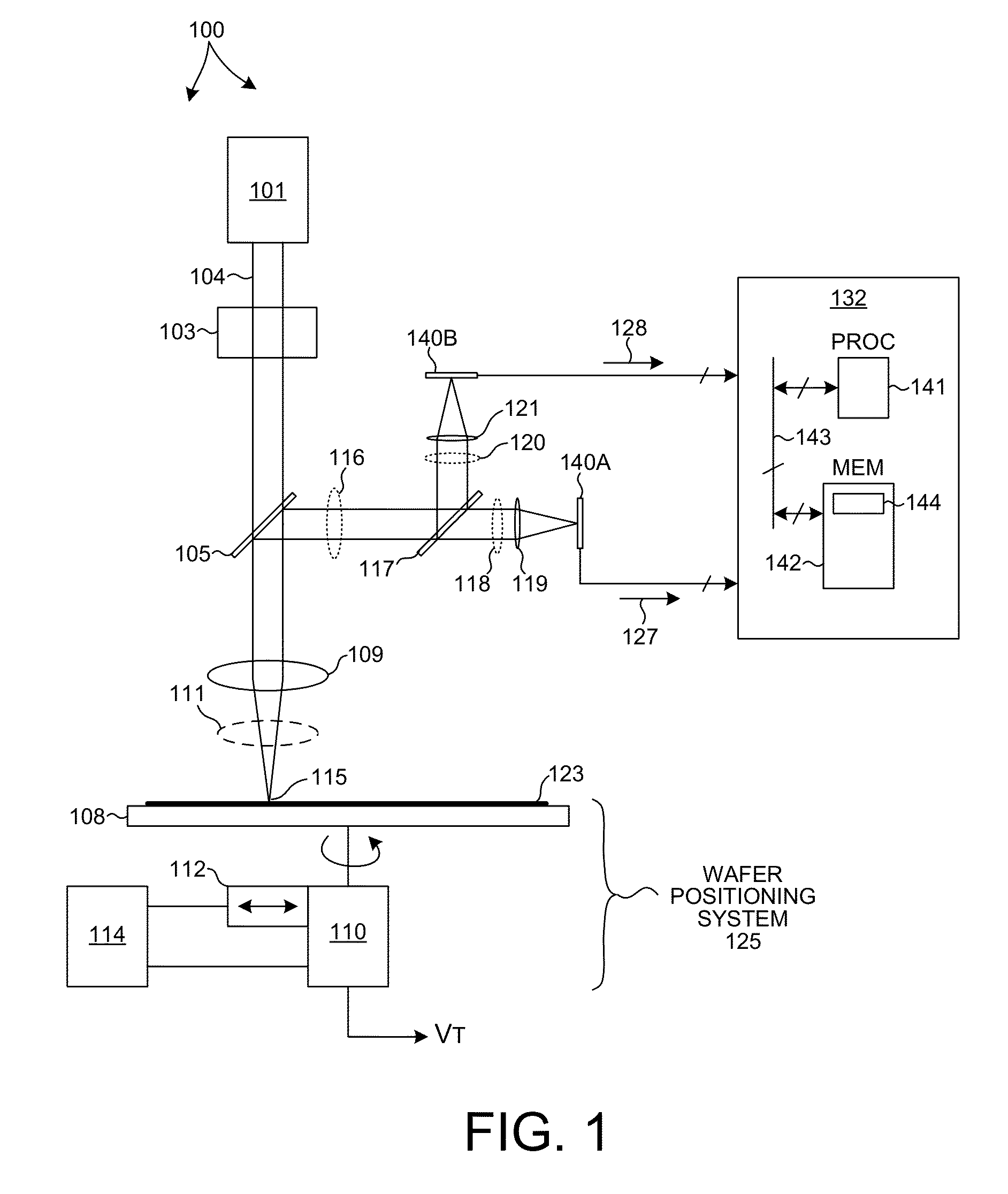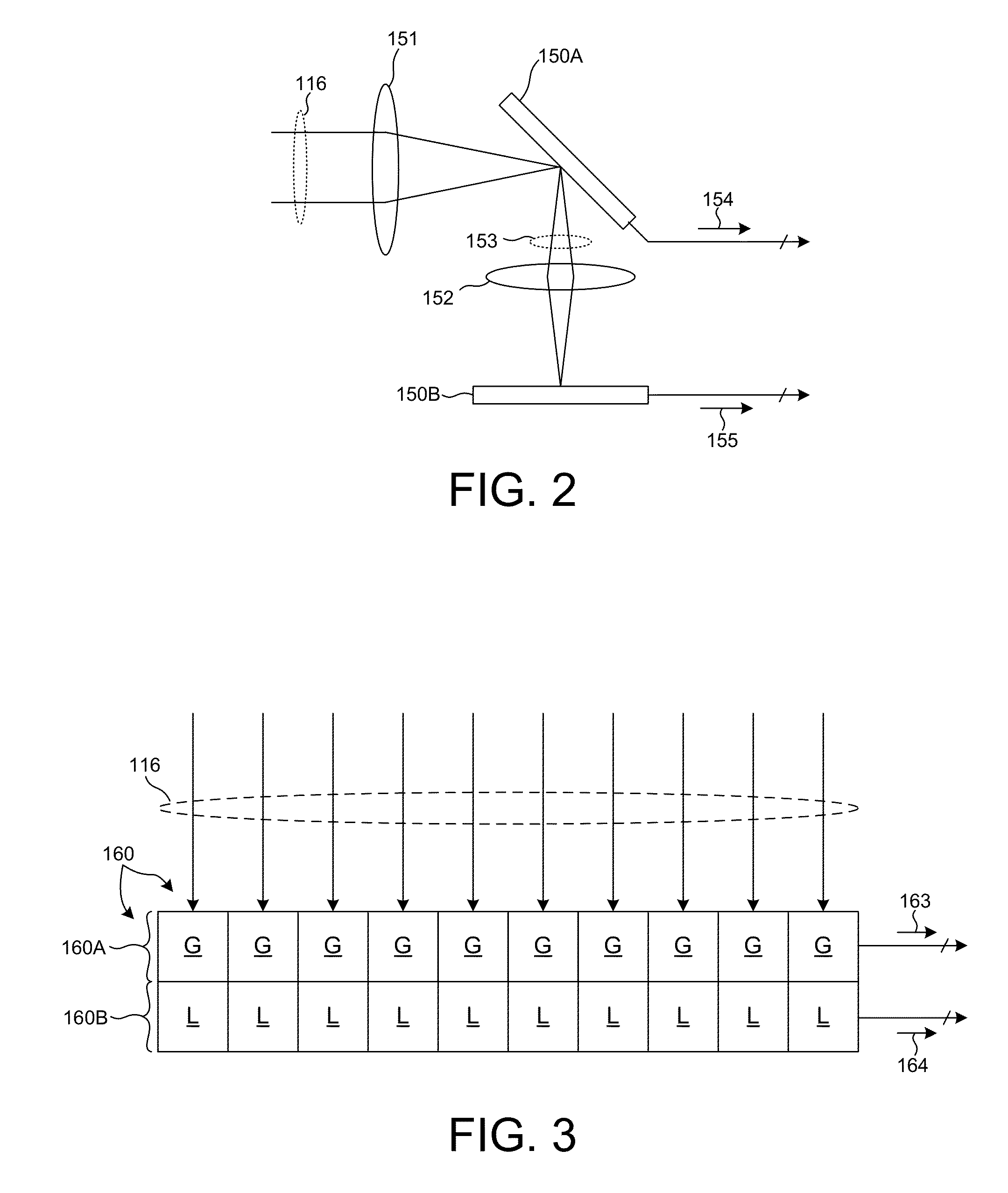Sample inspection system detector
a detection system and sample technology, applied in the direction of material analysis, instruments, radiation control devices, etc., can solve the problems of inspection systems, damage to the wafer surface, limited sensitivity of typical detector arrays, etc., to optimize the dynamic range of the overall detector system, increase the dynamic range of the inspection system, and improve the effect of the overall detector system
- Summary
- Abstract
- Description
- Claims
- Application Information
AI Technical Summary
Benefits of technology
Problems solved by technology
Method used
Image
Examples
Embodiment Construction
[0036]Reference will now be made in detail to background examples and some embodiments of the invention, examples of which are illustrated in the accompanying drawings.
[0037]FIG. 1 is a simplified schematic view of one embodiment of a surface scanning inspection system 100 that may be used to perform the inspection methods described herein. For simplification, some optical components of the system have been omitted. By way of example, folding mirrors, polarizers, beam forming optics, additional light sources, additional collectors, and additional detectors may also be included. All such variations are within the scope of the invention described herein. The inspection system described herein may be used for inspecting patterned, as well as unpatterned wafers.
[0038]As illustrated in FIG. 1, a wafer 123 is illuminated by a normal incidence beam 111 generated by one or more illumination sources 101. Alternatively, the illumination subsystem may be configured to direct the beam of light ...
PUM
| Property | Measurement | Unit |
|---|---|---|
| quench time | aaaaa | aaaaa |
| wavelength range | aaaaa | aaaaa |
| wavelength range | aaaaa | aaaaa |
Abstract
Description
Claims
Application Information
 Login to View More
Login to View More - R&D
- Intellectual Property
- Life Sciences
- Materials
- Tech Scout
- Unparalleled Data Quality
- Higher Quality Content
- 60% Fewer Hallucinations
Browse by: Latest US Patents, China's latest patents, Technical Efficacy Thesaurus, Application Domain, Technology Topic, Popular Technical Reports.
© 2025 PatSnap. All rights reserved.Legal|Privacy policy|Modern Slavery Act Transparency Statement|Sitemap|About US| Contact US: help@patsnap.com



